- Author Jason Gerald [email protected].
- Public 2023-12-16 10:50.
- Last modified 2025-01-23 12:04.
Firefox is a commonly used internet browser and can run on PCs, Mac books, and some tablets. This browser is known for its wide range of add-ons and is also less likely to be infected by malware than Internet Explorer. However, if you're having trouble with this browser or because you've never used it, you may want to uninstall the entire program.
Step
Method 1 of 4: Removing Firefox from Windows 7 PC
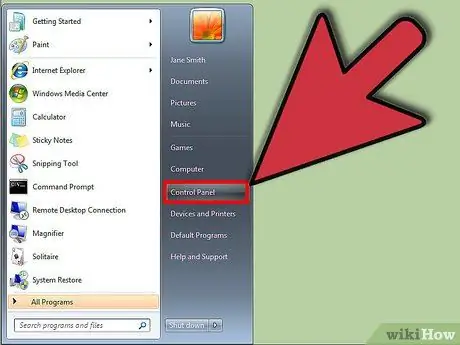
Step 1. Open Control Panel
In the Start menu, look for the shaded section to the right of frequently used apps that contains a list of options. Among the options are links that link to the Documents and Pictures folders. Far below it will be a link called "Control Panel." Click this link.
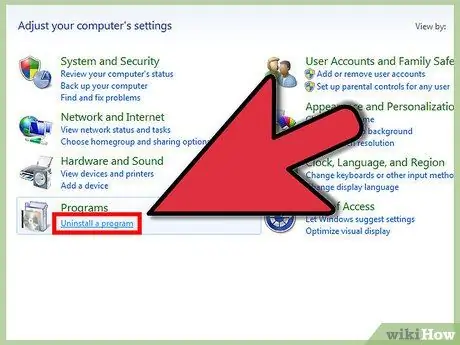
Step 2. Go to the Uninstall subheading
When the Control Panel window opens, there will be several headings, including headings named "System and Security," and "Network and Internet." Look for a heading called "Programs." Below that there will be a subheading called "Uninstall a program." Click this link.
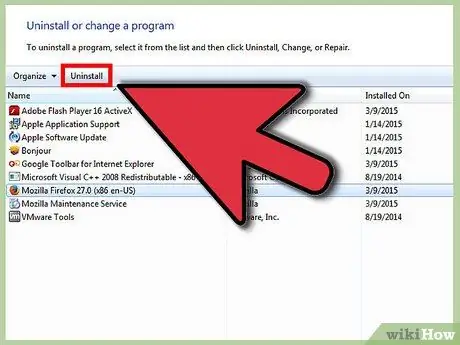
Step 3. Select Mozilla Firefox
A menu will appear that lists the many applications currently on your computer. Scroll down until you find Firefox. Highlight Firefox by clicking once, then click "Uninstall", which can be found in the menu bar just above the list of applications.
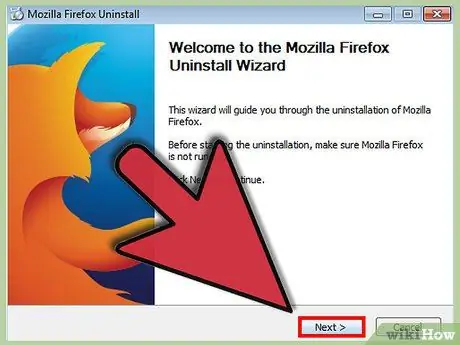
Step 4. Delete Firefox
The uninstaller will open, and will ask if you want to remove the selected program. Click "Next" (not "Cancel"). Then click "Uninstall."
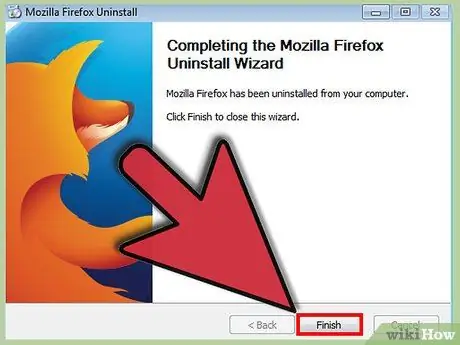
Step 5. Click "Finish" to close the uninstaller window
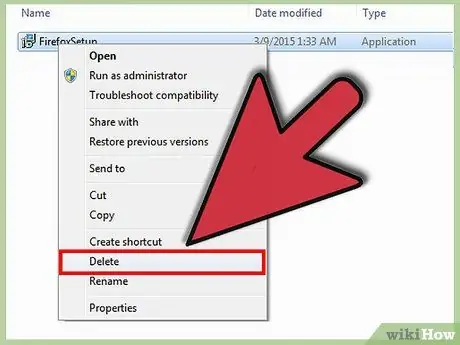
Step 6. Delete other Firefox-related files and folders
Some files or folders cannot be deleted by the uninstaller and must be deleted manually. Before you proceed, you must first determine if you are running Windows 7 32 bit or 64 bit. Check here.
- If you are running Windows 7 32 bit, delete this folder: C:\Program Files\Mozilla Firefox.
- If you are running Windows 7 64 bit, delete this folder: C:\Program Files (x86)\Mozilla Firefox.
Method 2 of 4: Removing Firefox from Windows 8 PC

Step 1. Open Control Panel
For Windows 8: swipe towards the right edge of the screen to open the Charms menu. Click "Search," then type "control panel." Click the Control Panel icon.
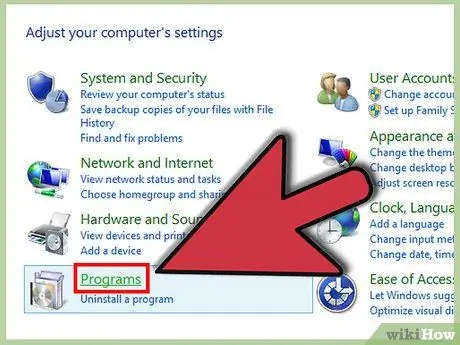
Step 2. Click the "Programs and features" heading
" The easiest way to find the Programs heading is to look at its options as icons.
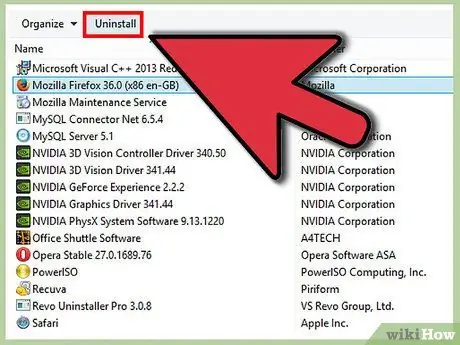
Step 3. Select Mozilla Firefox
A menu will appear showing a list of applications currently on your computer. Scroll down until you find Firefox. Highlight it by clicking it once, then click "Uninstall."

Step 4. Delete Firefox
The Uninstaller for Firefox will open, and will ask if you want to remove the selected program. Click "Next" (not "Cancel"). Then click "Uninstall."
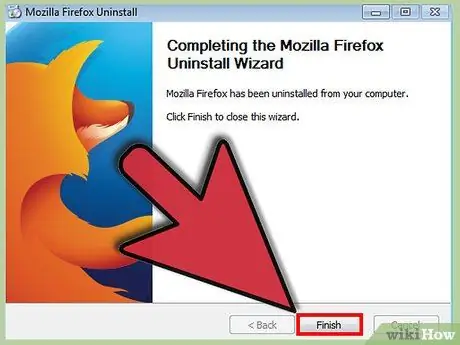
Step 5. Click "Finish" to close the uninstaller window

Step 6. Delete other Firefox-related files and folders
Some files or folders cannot be deleted by the uninstaller and must be deleted manually. In particular, you may have to delete the contents of this folder: C:\Program Files (x86)\Mozilla Firefox.
Method 3 of 4: Uninstalling Firefox from Mac
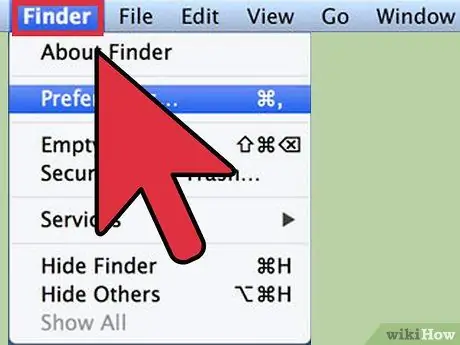
Step 1. Open Finder
Finder allows you to easily access all applications, files and folders. This is the easiest starting point if you really want to delete all Firefox-related files (a very good idea if you want to reinstall later).
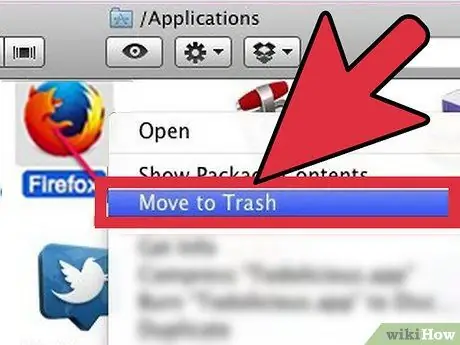
Step 2. Delete the Firefox app
You can either search for the "Firefox.app" file, or search for Firefox in the search box and then click on the "Applications" heading on the left of the Finder window. Click the file and drag it to the trash (outside the window, on the desktop scroll at the bottom of the screen).
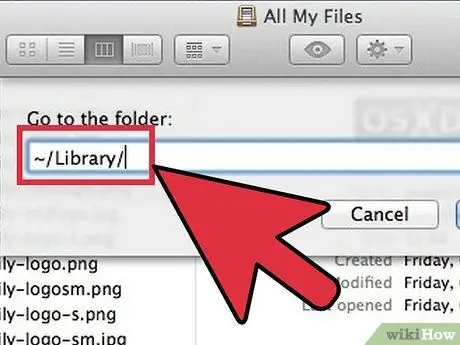
Step 3. Delete the associated files
Firefox creates files that exist in various places on your computer. Look in these places:
- Delete the contents of these folders: /Users/User/Library/Application Support/Firefox/ and /Users/User/Library/Caches/Firefox.
- Delete the file named "Preferences/org.mozilla.firefox.plist", which can be found in the "User," "admin," or "bill" library folders.
Method 4 of 4: Removing Firefox from Tablet

Step 1. Turn on and open your Android tablet
Mozilla, the company that makes Firefox, only issued this program to fit mobile devices of a certain size and only for devices running the Android system (a few other variations have been tried, but this program proved difficult to run on Apple and Amazon).
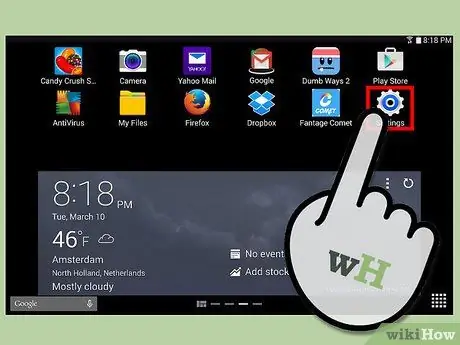
Step 2. Select the Settings icon
You may have to enter the Menu screen first.
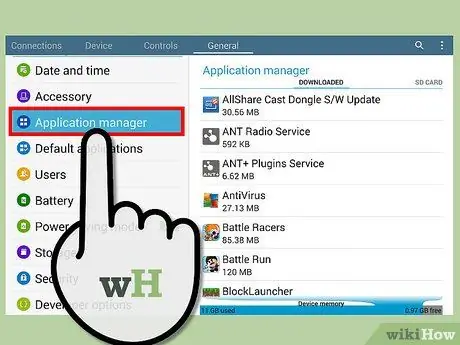
Step 3. Select "Apps" or "Application Manager
" This option may have a different name on certain devices. This will bring up a list containing all the major apps on your device.
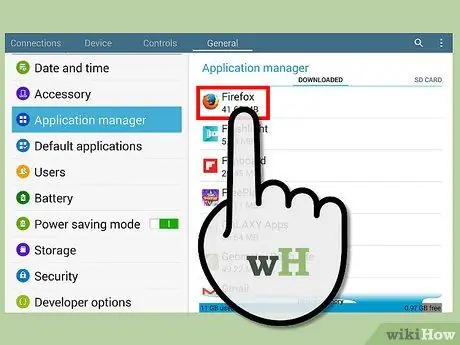
Step 4. Select Firefox
Look through your long list of applications, which will usually be sorted alphabetically.
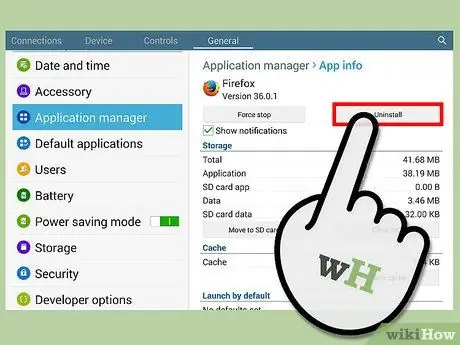
Step 5. Touch "Uninstall
" This will remove the program. You will be notified that the deletion is complete a few moments after you touch this option and confirm to delete it.






